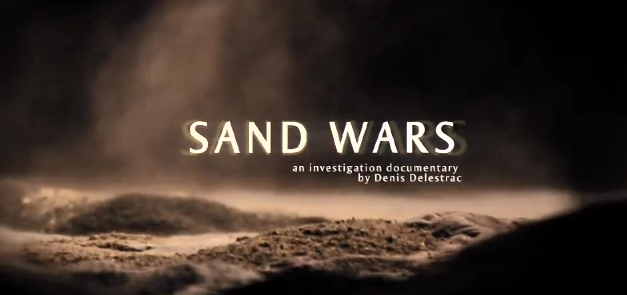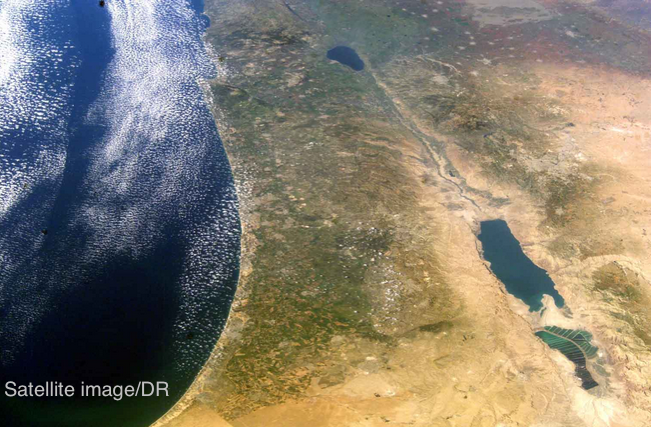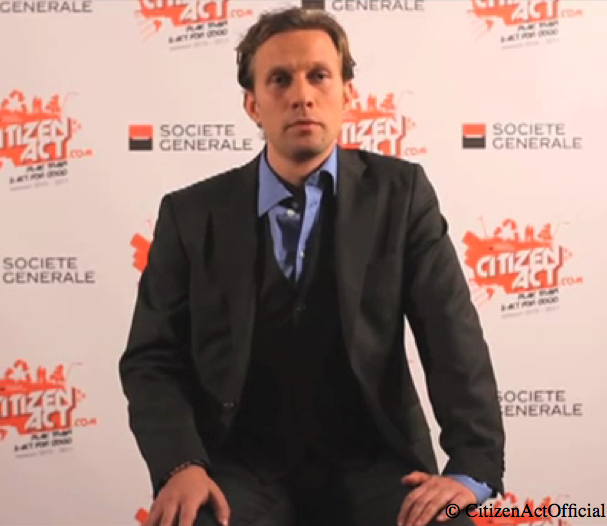ORGANIC SOAP MADE IN SWITZERLAND: a realistic sustainable business or a Sunday soap opera candy?
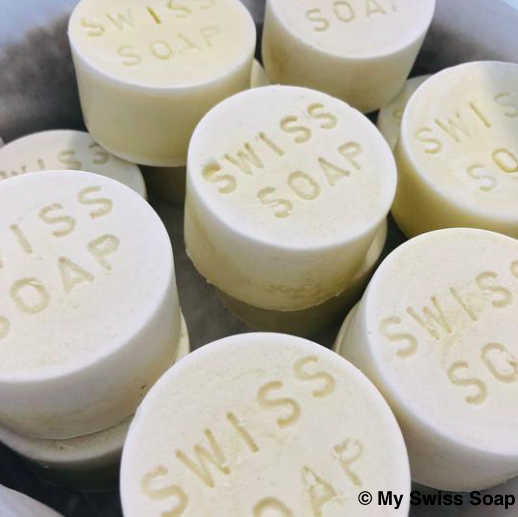 On a dull Sunday afternoon before Christmas, here I am on a train stopping at a “never-been-before” place nearby Geneva, with no interest for anybody on a Sunday. A sad industrial zone, not even a cosy café close to the station, only shapeless large shopping malls and factories, closed. I grab a tasteless inorganic Mac Fish burger while waiting for my best friend. We then head to a kind of huge and rough glass box strongly glued to a busy motorway. Once the entrance hall passed, there, we find the most astonishing cabinets of creativity. A jewellery maker, a tinsmith’s workshop, some eclectic artists, an eccentric children dressmaker, a classical music composer and a “Master Soap Maker”. A soap maker? If not industrial, I thought, that kind of production must be made by Sunday enthusiasts who enjoy tinkering with bubbles in their kitchen.
On a dull Sunday afternoon before Christmas, here I am on a train stopping at a “never-been-before” place nearby Geneva, with no interest for anybody on a Sunday. A sad industrial zone, not even a cosy café close to the station, only shapeless large shopping malls and factories, closed. I grab a tasteless inorganic Mac Fish burger while waiting for my best friend. We then head to a kind of huge and rough glass box strongly glued to a busy motorway. Once the entrance hall passed, there, we find the most astonishing cabinets of creativity. A jewellery maker, a tinsmith’s workshop, some eclectic artists, an eccentric children dressmaker, a classical music composer and a “Master Soap Maker”. A soap maker? If not industrial, I thought, that kind of production must be made by Sunday enthusiasts who enjoy tinkering with bubbles in their kitchen.
An archeologist surely heard about the older evocation of the saponification reaction, as far as the beginning of the 3rd millennium BC in the kingdoms of Babylon and Sumer. After a technical small-talk about ancient and traditional soap recipes, I definitively had in front of me a real “Master Soap Maker”, a profession not so known in Switzerland. To the contrary of some traditional productions even in the Middle East (Alep soap), our soap maker doesn’t use solvant to remove her soap bars when dried. As she applies the principles of eating organic, avoiding plastic and pesticides, thinking “refillable”, “biodegradable” and “zero waste”, her production is logically cold-manufactured (to preserve the properties of the ingredients), 100% natural and organic, often enriched with shea butter and kaolin, without paraben or chemical product. She also makes a line without fragrance, consequently, many of her clients with problematic or allergic skin order her products on a regular base.
We are tempted to think handmade soap production is a sugary romantic vision for a nice Christmas present attention to a sweet little lady with fruity delicate complexion; the candy on the cake would be that client feels she/he does a good action for the environment. The reality is far bitter than that. The profession of “Maître Savonnier”, as it was famously named in France for centuries until 1950s, collapsed due to synthetic substances starting to be used in the composition of cosmetic products which were since, industrially produced. Not only those industries were competing with the manufactures of natural soap (mainly known in Marseille) but detergents and synthetic components, such as products from oil (parabens) and chemical industry, can cause allergies and have a heavy impact on surface waters.
A “list of priority substances from cosmetic products to be monitored in waters”* was published in the Summer edition of the ARPEA Magazine (member of the Swiss Union of the specialised press). We feel cold in our back when reading most of our favorite supermarket cosmetic brands are in fact, putting our health at risk in the long term, disrupting and destroying the aquatic ecosystems and above all, dramatically diminishing drinking water quality.
13 of the 31 substances of the list, have a strong capacity of bioaccumulation that conducts to biomagnification in the aquatic environment. That means, substances present in the food chain may contaminate humans in the long term. 17 substances have a high ecotoxicity rate, whereas 11 have a direct toxic effect when applied on the skin or inhaled. Cancer-causing (carcinogenicity), embryo toxicity (teratogenicity), DNA toxicity (mutagenicity), reproductive toxicity (reprotoxicity) and possible effects on hormone systems (endocrine disruptor), are also included in the human toxicity of those 11 substances.
 Butylphenyl methylpropional, a commun substance used in the composition of perfumes of hygiene
Butylphenyl methylpropional, a commun substance used in the composition of perfumes of hygiene
 products, is among the worst substances, presenting the dangers of bioaccumulation, ecotoxicity and human toxicity. According to the European Chemicals Agency (ECHA) in 2018, between 1’000 to 10’000 tons are made in or imported to the European Economic Area (EEA) and its GHS pictograms are not more reassuring (adjacent illustrations).
products, is among the worst substances, presenting the dangers of bioaccumulation, ecotoxicity and human toxicity. According to the European Chemicals Agency (ECHA) in 2018, between 1’000 to 10’000 tons are made in or imported to the European Economic Area (EEA) and its GHS pictograms are not more reassuring (adjacent illustrations).
While synthetic substances in mass cosmetic production are presently on the scientific scrutiny phase for a future better regulation in the posology or even a ban, consumers shouldn’t be surprised to find more and more old fashion soaps newly showing off at drugstores and supermarkets or even, to cross the path of a freshly trained Master Soap Maker starting a serious business. More than a commercial exotic or Christmas feeling, traditionally made soaps are a simple solution to contribute to preserve our health and surface water quality.
Butylphenyl methylpropional GHS pictograms
*note: the substances analysed by the Water Research Fund (FOWA) in shower gels and shampoos is a study carried out by the City of Lausanne’s Water Department, in collaboration with the University of Lausanne and financed by the Swiss Society of Gas and Water Industrialists (SSIGE)
List of the 31 substances of the study to determine waste water quality, with the courtesy of ARPEA, the University of Lausanne and the City of Lausanne
Text:
Celina Kosinski
Sources:
ARPEA, Association romande pour la protection de l’environnement
Dr Pierre-Jean Copin and Dr Fereidoun Khajehnouri (City of Lausanne, Water Depart.), Myriam Ben Hassena, Donald Shelton and Dr Nathalie Chèvre (University of Lausanne, Faculties of geosciences and environmental sciences), Etablissement d’une liste de substances prioritaires provenant des produits cosmétiques à surveiller dans les eaux, ARPEA mag, N° 277, été 2018
My Swiss Soap, Ateliers de la Côte, Etoy, Switzerland
PLANTING TREES USING ECOSIA WEB SEARCH ENGINE
By Alexandre Torchet, Master in paleontology at the University of Zurich (Switzerland)
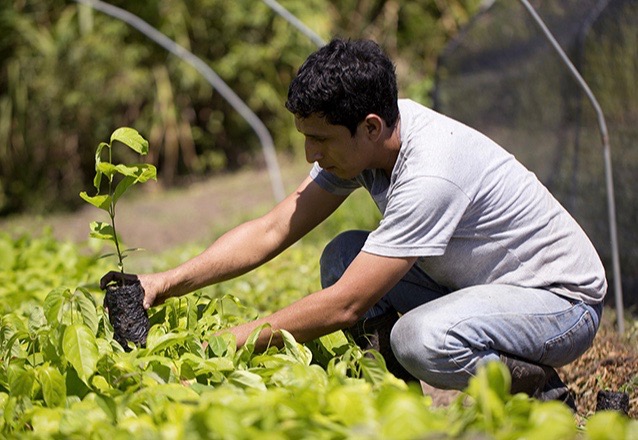
Searching information using the Internet has become a regular activity since a decade. However, the Internet users are still hardly aware about the ecological impact and the energetic cost of web searching. Although it may look like it has a positive impact by reducing paper consumption, numeric technologies implies a rising need for electricity. Since 2007, Smartphone use’s burst and broadband mobile lead to very efficient infrastructures: these are data centers which are big energy consumers. Studies from 2009 showed that two Google researches needed enough energy to boil the water of a boiler! This is even trickier for the Internet users, since their environmental impact cannot be seen directly by them. This impact is linked to the informatics robots sorting out billions of web pages and servers stocking data bases. These are the virtual activities behind every web request.
Considering this, new search engines are developed in order to propose alternative and attractive ways to make a research on the Internet. One of the most successful of them all is the German engine Ecosia which goal is to support nonprofit environmental organizations around the world by the donation of 80 % of its surplus incomes. Organizations such as the Yayasan Massarang which is fighting against forest destruction and biodiversity loss in Indonesia or the OZG which is promoting reforestation in Burkina Faso. The mechanic of the Ecosia’s system is that one research using their engine results into one planted tree. Another very practical and appealing idea of Ecosia is that each user has a tree counter which gives the opportunity to follow one’s impact using this engine. Besides this, Ecosia’s users can also follow the continuous progress of the company since it publish a monthly report indicating what amount of money could have been raised and given to what organizations.
The transparency of its activities is indeed part of the enterprise’s communication. The company reached the marvelous amount of 15 millions of planted trees on the 16th of October 2017 and meets the ambitious challenge to plant one billion trees before 2020. The positive impact is huge since it promotes reforestation and conservation of areas of great environmental value: tropical forests like in Indonesia preserve most of the terrestrial biodiversity in terms of animals and plant and many tropical species cannot be found anywhere else in the world. Tropical forests are even more important to protect nowadays because of the threat that represent unsustainable exploitation of wood and soil, fragmentation of natural habitats or pollution. Ecosia’s donations have also a social impact because it improves opportunities for local development, it promotes the development of sustainable use of agricultural and production methods farming in the local populations, it also supports children education.
As a conclusion, web search engines are fabulous information tools that keep getting faster and more efficient but every progress has a cost and numeric technologies are in need of more and more electrical energy to stay in activity. In response to this and to the many other problems that humanity is facing nowadays, Ecosia stands as a changemaker whose philosophy can be summarized by this quote from Christian Kroll, it’s founder: “Thanks to sponsored links, search engines earn billions every year. Ecosia believes that there is a more eco-friendly way of using these huge profits and that the money should better be used to fight global warming.”
Bibliography:
Bastianutti J, Chamaret C., Googliser, c’est polluer ? La difficile émergence d’acteurs au service de la transition bas carbone sur le marché des moteurs de recherche, Is Googlizing polluting ? The difficult emergence of stewards for low-carbon transition on the search engine market. Entreprises et histoire. 18 juillet 2017; (86):125-39.
Ecosia debuts « world’s greenest search engine » | Environment | The Guardian [Internet]. [cited 29 oct 2017], https://www.theguardian.com/environment/2009/dec/03/ecosia-green-search-engine
Internet references:
GEOLOGY & ENVIRONMENT
THE END OF SAND AND PARADISE BEACHES
“70% of the world’s beaches disappear.” All main rivers of the world are scattered at the maximum capacity with hydroelectric dams which retain sediments, consequently creating a lack of sand at river mouths. Added to this phenomenon, increasing violent storms on coastal areas, the sea level rise and sand mining on shores, cause the decline of beaches.
The Gold Rush for illegal sand mining in rivers and beaches leads to an imminent disaster.
A stricking report about the peril of the lack of sand and a TEDx intervention

VOLCANOES’ GUARDIANS IN GENEVA
You would be surprised to find a society of volcanology in Geneva.
Volcano specialists and volcano lovers meet every month in a total discretion. They show stunning images and short movies of liquid fire seething in the earth’s entrails they shot during their last expedition at the edge of the extreme, sometimes risking their life. They tirelessly travel hot spots in the world and help scientists to study the activity of the volcano they explore, also evaluating the risks and impact for local populations.
One of the most outstanding meeting showed the volcanoes of Kamchatka (peninsula in the Russian Far East), a world heritage of the UNESCO. Then followed the splendid movie about the Mount Nyiragongo (Democratic Republic of the Congo) which was presented by its main maker Olivier Grünewald, a professional volcano photographer. Watch the preview…
Meetings take place monthly at the Société de Volcanologie Genève. More infos on www.volcan.ch
EXPLORATORY METHODS ON HYDROGEOLOGY applied by 3 research centres
UNIVERSITY OF GENEVA & STATE OF GENEVA
CLASSIFICATION OF SURFACE WATERS BY GEOCHEMICAL SIGNATURE
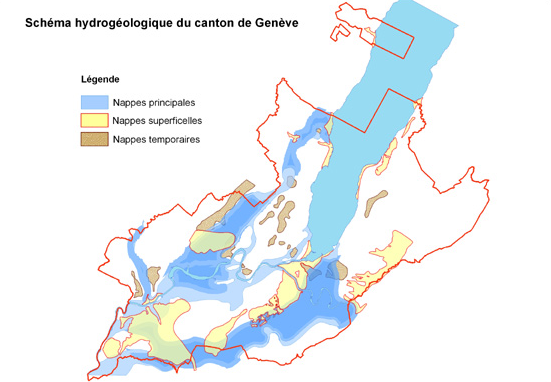 “Easy identification of chemical signatures characteristic of water systems has become a major issue in the field of environmental protection and management. We propose an exploratory method, exclusively based on the statistical analysis of river water composition, capable of characterizing river waters in a given watershed through their chemical composition, as well as of detecting modifications, even when not related to pollution sources. Although the method is based on well-known statistic techniques (Principal Component Analysis and Linear Discriminant Analysis), and therefore is very simple and straightforward to apply, it goes far beyond the common data reduction use of these techniques.”
“Easy identification of chemical signatures characteristic of water systems has become a major issue in the field of environmental protection and management. We propose an exploratory method, exclusively based on the statistical analysis of river water composition, capable of characterizing river waters in a given watershed through their chemical composition, as well as of detecting modifications, even when not related to pollution sources. Although the method is based on well-known statistic techniques (Principal Component Analysis and Linear Discriminant Analysis), and therefore is very simple and straightforward to apply, it goes far beyond the common data reduction use of these techniques.”
M. Filella, I. Pomian-Srzednicki, P. M. Nirel
Map above: © OSEV, Geneva
© 2014 Elsevier B.V. All rights reserved.
ZUCKERBERG INSTITUTE – THE NEGEV
ASSESSMENT ON THE JORDAN RIVER QUALITY
“Today, contaminants from both sides of the Jordan River Basin are leached into groundwater bodies that some leaks and seep into the Jordan River Basin, as well as into the Jordan River itself. There is no immediate agreed solution to remediate the Jordan River and to increase water allocation along the valley. The various types of effluents and the groundwater seepage into the Jordan River elevated its salinity and modified its chemical composition.”
S. Arnon, E. Adar
Applying MCMusf for Evaluating The Spatial and Temporal Dynamics of The Jordan River Water Quality
THE CENTRE FOR HYDROGEOLOGY AND GEOTHERMICS – NEUCHATEL
GROUNDWATER AND VEGETATION
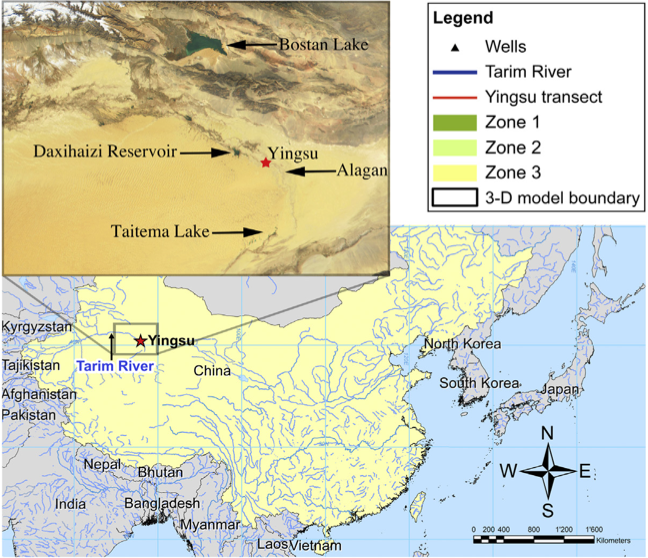 “Using tree ring data as a proxy for transpiration to reduce predictive uncertainty of a model simulating ground- water – surface water – vegetation interactions”
“Using tree ring data as a proxy for transpiration to reduce predictive uncertainty of a model simulating ground- water – surface water – vegetation interactions”
O.S. Schilling, J. Doherty, W. Kinzelbach, H. Wang, P.N. Yang, P. Brunner
© Science Direct Journal of Hydrology
Summary
“The interactions between surface water, the vadose zone, groundwater, and vegetation are governed by complex feedback mechanisms. Numerical models simulating these interactions are essential in quantifying these processes. However, the notorious lack of field observations results in highly uncertain parameterizations. We suggest a new type of observation data to be included in the calibration data set for hydrological models simulating interactions with vegetation: Tree rings as a proxy for transpiration. We use the lower Tarim River as an example site for our approach. In order to forestall the loss of riparian ecosystems from reduced flow over a 300 km reach of the lower Tarim River, the Chinese government initiated periodical, ecological water releases. The water exchange processes in this region were simulated for a cross-section on the lower reaches of the Tarim River using a numerical model (Hydro-GeoSphere) calibrated against observations of water tables, as well as transpiration estimated from tree ring growth. A predictive uncertainty analysis quantifying the worth of different components of the observation dataset in reducing the uncertainty of model predictions was carried out. The flow of information from elements of the calibration dataset to the different parameters employed by the model was also evaluated. The flow of information and the uncertainty analysis demonstrate that tree ring records can significantly improve confidence in modeling ecosystem dynamics, even if these transpiration estimates are uncertain. To use the full potential of the historical information encapsulated in the Tarim River tree rings, however, the relationship between tree ring growth and transpiration rates has to be studied further.”
© 2013 Elsevier Ltd. All rights reserved.
SUSTAINABLE DEVELOPMENT & SOCIETY
CAN WE DO BUSINESS AND FIGHT POVERTY IN ONE GO?
By Celina K.
Ask Julien Goy, a specialist in corporate social responsibility, working as an independent consultant as well as a scientific associate for the University of Geneva in Switzerland.
As a consultant, Julien Goy is guiding private companies and banks for their investing in the field of social and environmental responsibility. His innovative and flexible approach made him recently interview Mrs. Alexandra Palt, Director of societal and environmental responsibility at l’Oréal. Surprisingly, the super giant imposing its monopole of conformist beauty all over the world, does have a jurist, passionate about human rights, responsible of improving the involvement of the multinational in new “business models” and mentality changing within the firm, to internally apply social responsibility. On the external side, encouraging production chains and consumers for a more responsible attitude in the process of production/consumption.
This bridge of communication between producers and buyers, installs more transparency and trust… and a better marketing, generating profits. Those values are of course credible by the public only when companies back the involvement they announce. In that sense, Julien Goy belongs to the pioneers who use the carrot and not the stick, to advice companies – which often couldn’t care less about the impacts of their production on the environment and the working conditions of workers employed by a blurry web of subcontractors – to gradually restructure in deep and genuinely, their fundamental processes of production and human resources.
Julien Goy’s blog, RESPONSABILITE SOCIALE, provides useful tools for guidance and latest information, addressed to professionals and the general public in the field of social responsibility.
Julian Goy is as well responsible for the IS@DD, the platform of sustainable development of the University of Geneva, powered by the Institute for Environmental Science.
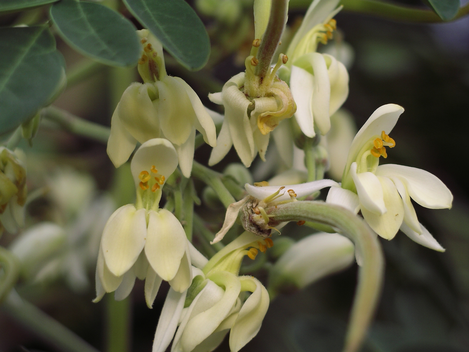
MORINGA TREE: FIRST AID AGAINST GLOBAL MALNUTRITION?
By Celina K.
Thanks to one of our contacts who has worked on development projects in 6 villages in Ivory Coast, we found out about the Moringa tree. All parts of the tree seem to have an extraordinary potential that could help impoverished populations to survive, especially in the driest places in the world, as the tree grows well in a poor and dry soil.
As malnutrition concerns today both developing countries and the Western industrially fed populations, the massive cultivation of Moringa trees could be of great interest for keeping in good shape not only local populations growing the trees but the whole humanity. Above all, we have read about the properties of Moringa powder to purify filthy water. We found an old scientific report of 1993 about it.
WHEN NGOs PROVIDE EDUCATION AND SUSTAINABLE INFRASTRUCTURES
By Celina K.
Clean water and proper education are the 2 fundamental elements of the basic needs. If at the end of the 19th century in Western countries, primary schools became obligatory and free, and drinking water a responsibility of the state, we easily take these as universal established facts. The reality today, is that in many countries in the world, those 2 basic needs for a society to function are not provided by the state, due to a lack of good will and/or economical possibility. In those countries, children and women work in the fields, dumps, mines or factories to afford their unique daily meal. As a result, a majority of illiterates is composed of girls, women, children with disabilities or belonging to an ethnic minority.
While filming the earth from above for his outstanding movie Home (2009) produced by Luc Besson, the great Yann Arthus-Bertrand noticed and declared later in a television interview: “Many realities are revealed from the sky when you look at the earth. For example in India, I was filming some fields from above and I saw only women working in the fields”. Still in India, drinking water is specifically an issue in villages: there can be no well at all, if there is one, water is often naturally contaminated with iron or cyanide, Untouchables and certain religious minorities simply don’t have access to the public well, as they are considered “spiritually filthy” by the other villagers. Wherever NGOs institute educational and sustainable agricultural projects in developing countries, they start to do a drilling to get drinking water. Some NGOs do an extraordinary job on the spot and from their headquarters; they take responsibilities and involvements a country doesn’t for its people. We present 3 of them which have the same purpose, though a different infrastructure.
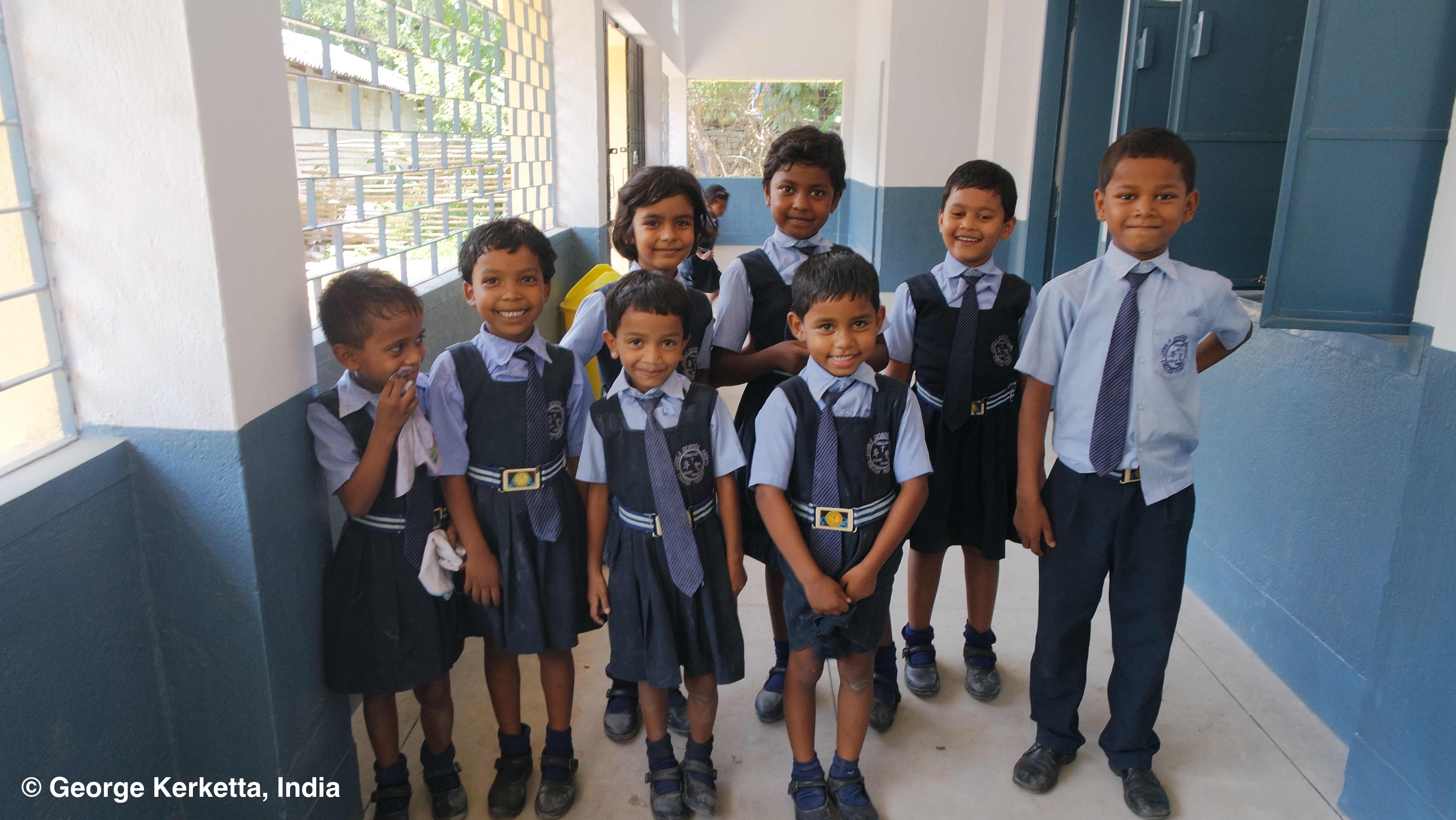
INDIA: “EDUCATION AS A UNIVERSAL GOAL”
“With an estimated 20 million kids living on the streets, India has one of the highest concentrations of street children in the world. The children are typically malnourished and uneducated. They receive no medical treatment and are involved in child labour from an early age. Many resort to prostitution, crime and drug trafficking and are often victims of sexual abuse.” (Empart.org – Read the report of New Delhi Television Limited…)
I met George Kerketta a few years ago on a train nearby the Swiss capital. For reasons we never knew, the train stopped for a long while in the middle of nowhere. In front of me was a very stressed passenger heading late for a meeting, due to the train unknown delay. I decided to help him and when we settled his appointment again, George told me in detail about his work in India, the schools, he and his association were running and newly founding. He portrayed a whole situation of a place in the world, I had never heard of. He explained about the destroyed environment due to deforestation, the unique source of revenue in Jharkhand State, and a great poverty – the greatest in rural India – caused by illiteracy and a lack of business. George had the chance to go to school but his grandfather was illiterate. That gave him the drive to devote his life to children education, spreading knowledge and know-how in his hometown.
George Kerketta is regularly traveling to Europe to raise funds for the projects of more and more rural school complexes (comprising classrooms, a well, dormitories, kitchen and sanitation), in remote areas where children don’t have access and financial resources to go to school. His humble and contagious passion for education makes him have a web of contacts all over Europe, including among heads of private universities. Whoever encounters George Kerketta, becomes enthusiastic not only to share and help him and his projects in India, but also to support such projects at home, even your own. His faith, his fight against ignorance and dispiritedness are deeply inspiring. Read the report…
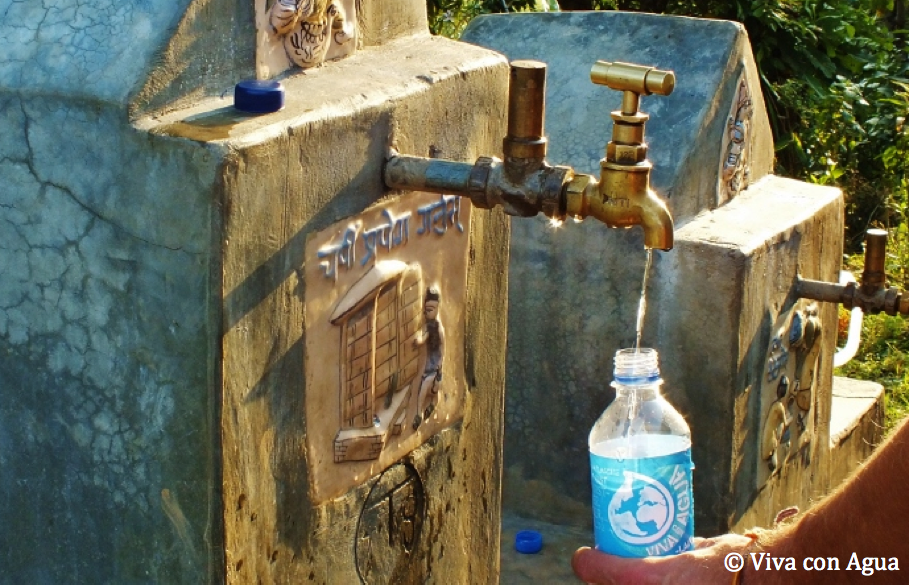
VIVA CON AGUA: “WATER FOR ALL” IN SOUTH AMERICA, ASIA & AFRICA
The NGO Viva con Agua is providing drinking water and sanitation on 3 continents, in partnership with the well known Swiss NGO Helvetas. It is currently active on many fronts in impoverished areas in Guatemala, Mozambique, Madagascar, Nepal, India…
Created in 2006 and based in Hamburg (Germany), Viva con Agua is expanding very fast in the rest of Europe and accounts offices in Switzerland, Austria and Spain. The NGO is very creative, vibrant and very open minded to pass the message of a global responsibility toward the use and the lack of drinking water in the world, including into regions where significant fresh water reserves are threatened by increasing anthropic contamination. “Concerts, parties, fashion shows, football matches, marathons, exhibitions, bets and even massages – there are no limits to the creativity of Viva con Agua and its supporters.
This plenitude of ideas has one goal: to raise money for access to clean drinking water for all!”. Read more…
MADAGASCAR AND CAMBODIA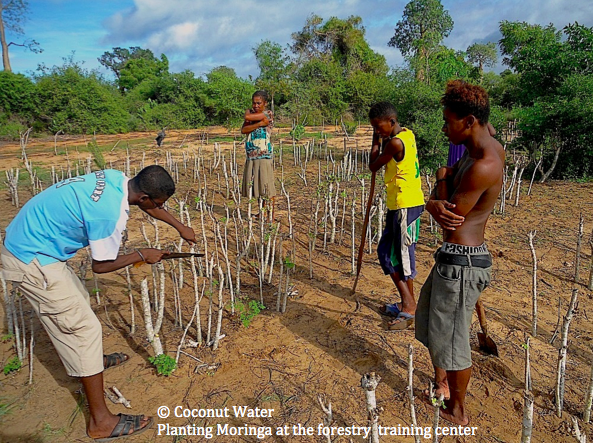
MADAGASCAR AND CAMBODIA
Eau de Coco/Coconut Water could be qualified as a large scale laboratory applying altogether sustainable agriculture, social cohesion, education and ecofriendly tourism. Active in Madagascar and Cambodia, the NGO has head offices in Switzerland, France, Spain, Andorra.
And the recipe works. In Madagascar, an avant garde multi structure establishes an educational program for the respect of the environment and an environmental rehabilitation program (Mangrove reforestation, recovery of the native forest and Moringa production which provides a fundamental nutritional balance to the locals), co-functioning with a solidary hotel, an initiative of the NGO Bel Avenir.
The sociologist Nicole Chambron (Director of the European Research Center and Associate researcher at the CNRS 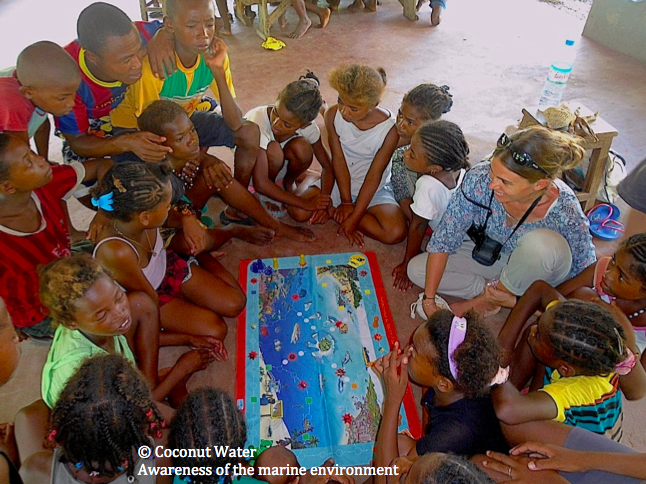 in France), is a member of the Environmental Committee of the Coconut Water network. She is mainly responsible for projects concerning the protection of the environment, environmental education and valorization of natural resources. She has established contacts between University of Tulear (Madagascar) and French universities. The network is also in contact with Spanish universities. The NGO Bel Avenir has signed an agreement with the president of the University of Tulear that houses a graduate school on the environment. “In this context, we welcome interns who come to field studies for their PhD or Master’s thesis. They thus have a Malagasy university scientific referent and access to documentation and the work of local students. The disciplines are botany, as well as political and social science, agronomy…” explains Mrs. Nicole Chambron. Read more…
in France), is a member of the Environmental Committee of the Coconut Water network. She is mainly responsible for projects concerning the protection of the environment, environmental education and valorization of natural resources. She has established contacts between University of Tulear (Madagascar) and French universities. The network is also in contact with Spanish universities. The NGO Bel Avenir has signed an agreement with the president of the University of Tulear that houses a graduate school on the environment. “In this context, we welcome interns who come to field studies for their PhD or Master’s thesis. They thus have a Malagasy university scientific referent and access to documentation and the work of local students. The disciplines are botany, as well as political and social science, agronomy…” explains Mrs. Nicole Chambron. Read more…
éalsdkjfaésl
Copyright © 2024 Celina Kosinski/www.genevaundercover.ch – all rights reserved
Website construction and editing: Celina Kosinski & Alexandre Torchet, Switzerland
Website corrective maintenance: Guillaume Petitat, Canada
